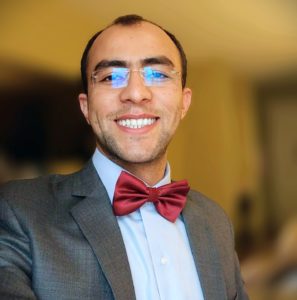July 5, 2023
By Hashim A. Khan, OD, FAAO, PhD Candidate at Brien Holden Vision Institute
The two strongest factors influencing the progression of myopia are education and near work. A substantial amount of data consistently supports a causal relationship between education level and myopia.

FatCamera, Getty Images
Disease risk factors are characteristics, behaviors, or conditions that increase an individual’s propensity to develop a particular disease or change the disease’s prognosis. While non-modifiable risk factors cannot be changed or controlled, lifestyle modifications can help reduce the risk of developing a condition or the risk of it progressing.
The non-modifiable risk factors related to myopia include ethnicity, age, parental myopia, age of onset, and baseline refractive error. Modifiable risk factors encompass near work, outdoor time, and sleep habits.
Non-Modifiable Risk Factors
The effect of gender on the development and progression of myopia has been reported in various studies. Higher myopia prevalence has been reported in males in previous generations. However, recent studies have reported a higher prevalence in girls than boys. The effect of gender on myopia progression has been found to be significantly attenuated when adjusted for other risk factors. These observations suggest that myopia may not have a direct biological link to gender but is more related to different social factors such as differential access to education, near-work attitude, and outdoor time.1,2
Several research studies have demonstrated significant differences between different ethnic groups in myopia prevalence and progression. Myopia is more prevalent among East Asian populations, especially those in China, Japan, and Singapore.3,4 It is debated whether the effect of ethnicity on the prevalence and progression of myopia is more related to the demographics and distribution of risk factors among ethnic groups.2 Luong et al.,5 studied a diverse sample of different ethnicities in the United States, and children of East/Southeast Asian descent demonstrated faster progression, suggesting a link between ethnicity and myopia. Also, in the COMET trial, African American children demonstrated slower progression compared to other ethnic groups.6
Axial elongation of the eyeball is the key determinant of myopia progression.2 Ocular growth and thus myopia progression is, therefore, a function of age. Different patterns of progression can be observed across different age groups. Myopia progresses in a non-linear pattern rapidly during childhood and adolescence, with gradual deceleration and stabilization by late teens.7,8
Parental myopia is associated with myopia progression in children and young adults. Myopic children and young adults with one or both myopic parents have been shown to progress faster than those born to non-myopic parents.9-11 It is possible that the demographic and lifestyle factors associated with myopia in parents also influence the development of myopia progression in their children.
Similarly, the age of myopia onset and baseline refractive error can influence myopia progression. Younger age at baseline was strongly associated with faster myopia progression and greater axial elongation in the COMET trial.6
Modifiable Risk Factors
Near Work and Education
The two strongest factors influencing the progression of myopia are education and near work. A substantial amount of data consistently supports a causal relationship between education level and myopia. A higher prevalence of myopia is associated with more years in education. Each additional year in education increases myopic refractive error by -0.27D/year.12 The increased near work as part of education promotes myopia progression. Current evidence supports that the duration and nature of near work as well as visual attitudes (working distance, duration) while performing near work influence myopia progression. Myopia progression is associated with exposure to near work, but no significant differences have been found between paper reading and computer work on myopia.13 Continuous reading, longer duration of reading, and shorter reading distance are associated with myopia.13 Although the mechanisms by which near work dictates myopia progression are not clearly understood, prolonged accommodative effort, peripheral hyperopic defocus, and stimulation of retinal OFF-pathway by black print on white background have all been speculated.2
Outdoor Time
Greater time outdoors has a protective effect against the development of myopia. The Sydney Myopia study reported that time spent outdoors, independent of sports, was associated with less prevalence and was protective against myopia development.14 Interestingly, longer outdoor time is associated with slower axial stretch in non-myopes but not in existing myopes.15 The findings support outdoor time being protective against myopia development rather than progression. Also, other studies have reported a negligible effect of outdoor time on myopia progression. Different hypotheses have been proposed as possible mechanisms behind the myopia protective effect of outdoor activity. These include higher reduced peripheral defocus, vitamin D synthesis, melatonin regulation, and dopamine upregulation.16 Nonetheless, it should be noted that most researchers used self- or parent-reported data to quantify outdoor time, which can be subject to recall bias.
Miscellaneous Risk Factors
Several other risk factors, including sleep hygiene, socioeconomic status, smoking, urban environment, diet, pollution, etc., have also been studied, and results are inconsistent. Although sleeping late has been found to be associated with higher prevalence and progression of myopia, children who have a greater tendency to sleep late are older, live in urban areas, have parental myopia/educated parents, spend more time reading and using digital screens, and spent less time outdoors.
 |
Hashim A. Khan is a current PhD Candidate at Brien Holden Vision Institute, University of New South Wales, working on Adult Myopia under the supervision of Prof. Padmaja Sankaridurg, Dr. Nina Tahhan, and A/Prof. Thomas John Naduvilath. |
References
- Enthoven C, Haarman AEG, Swierkowska J, et al. Gender predisposition to myopia shifts to girls in the young generation. Invest Ophthalmol Vis Sci. 2021;62(8):2331-2331.
- Morgan IG, Wu P-C, Ostrin LA, et al. IMI Risk Factors for Myopia. Invest Ophthalmol Vis Sci. 2021;62(5):3-3. doi:10.1167/iovs.62.5.3
- Holden BA, Fricke TR, Wilson DA, et al. Global Prevalence of Myopia and High Myopia and Temporal Trends from 2000 through 2050. Ophthalmology. 2016;123(5):1036-1042. doi:10.1016/j.ophtha.2016.01.006
- Foster PJ, Jiang Y. Epidemiology of myopia. Eye (Lond). Feb 2014;28(2):202-8. doi:10.1038/eye.2013.280
- Luong TQ, Shu YH, Modjtahedi BS, et al. Racial and Ethnic Differences in Myopia Progression in a Large, Diverse Cohort of Pediatric Patients. Invest Ophthalmol Vis Sci. Nov 2 2020;61(13):20. doi:10.1167/iovs.61.13.20
- Hyman L, Gwiazda J, Hussein M, et al. Relationship of Age, Sex, and Ethnicity With Myopia Progression and Axial Elongation in the Correction of Myopia Evaluation Trial. Arch Ophthalmol. 2005;123(7):977-987. doi:10.1001/archopht.123.7.977
- Myopia stabilization and associated factors among participants in the Correction of Myopia Evaluation Trial (COMET). Invest Ophthalmol Vis Sci. Dec 3 2013;54(13):7871-84. doi:10.1167/iovs.13-12403
- Polling JR, Klaver C, Tideman JW. Myopia progression from wearing first glasses to adult age: the DREAM Study. Br J Ophthalmol. Jun 2022;106(6):820-824. doi:10.1136/bjophthalmol-2020-316234
- Lee SS, Lingham G, Sanfilippo PG, et al. Incidence and Progression of Myopia in Early Adulthood. JAMA Ophthalmol. Feb 1 2022;140(2):162-169. doi:10.1001/jamaophthalmol.2021.5067
- Moon Y, Lim HT. Relationship between peripapillary atrophy and myopia progression in the eyes of young school children. Eye (Lond). Feb 2021;35(2):665-671. doi:10.1038/s41433-020-0945-6
- Lin Z, Vasudevan B, Gao T, Zhou H, Ciuffreda KJ, Liang Y. Refractive change and incidence of myopia among rural Chinese children: the Handan Offspring Myopia Study. Br J Ophthalmol. May 2022;106(5):628-632. doi:10.1136/bjophthalmol-2020-317811
- Mountjoy E, Davies NM, Plotnikov D, et al. Education and myopia: assessing the direction of causality by mendelian randomisation. BMJ. 2018;361:k2022. doi:10.1136/bmj.k2022
- Dutheil F, Oueslati T, Delamarre L, et al. Myopia and Near Work: A Systematic Review and Meta-Analysis. Int J Environ Res Public Health. Jan 3 2023;20(1)doi:10.3390/ijerph20010875
- Rose KA, Ip J, Robaei D, et al. Near–Work and Outdoor Activities and the Prevalence of Myopia in Australian School Students Aged 12–13 Years: The Sydney Myopia Study. Invest Ophthalmol Vis Sci. 2006;47(13):5453-5453.
- Li S-M, Li H, Li S-Y, et al. Time Outdoors and Myopia Progression Over 2 Years in Chinese Children: The Anyang Childhood Eye Study. Invest Ophthalmol Vis Sci. 2015;56(8):4734-4740. doi:10.1167/iovs.14-15474
- Lingham G, Mackey DA, Lucas R, Yazar S. How does spending time outdoors protect against myopia? A review. Br J Ophthalmol. 2020;104(5):593-599. doi:10.1136/bjophthalmol-2019-314675













